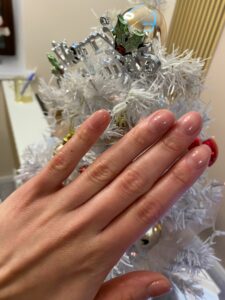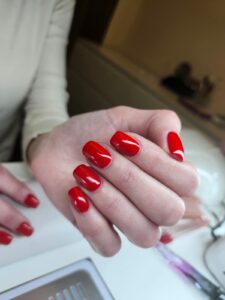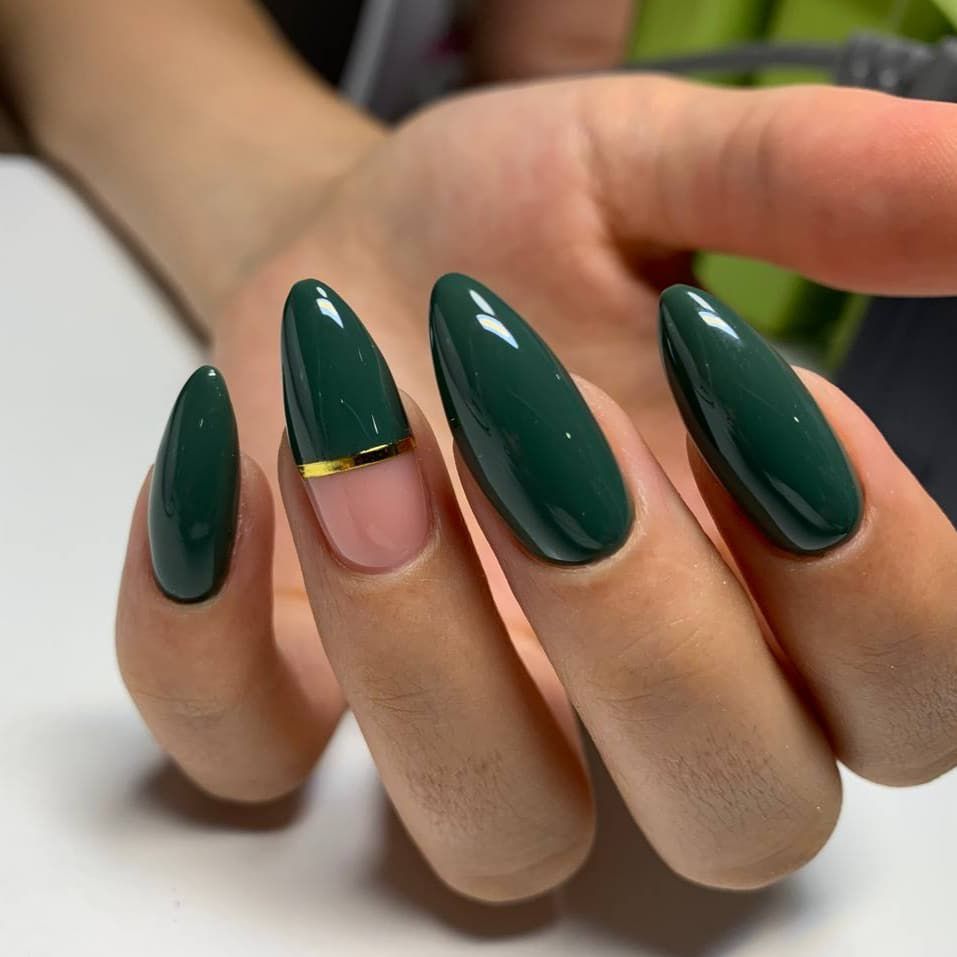15 Types of Manicures Compared in 2025: Your Ultimate Guide to Gorgeous Nails
An in-depth overview of trendy, classic, and innovative nail care techniques
1. Introduction
Our hands are true multitaskers: they gesture, perform the majority of our daily tasks, are involved in greetings and farewells, and often attract more attention than we think. Well-groomed nails are not only an aesthetic highlight but have gained a whole new level of importance in recent years. It’s no longer just about filing nails short or long and applying a simple clear coat. Instead, a wide range of manicure techniques has developed that combines aesthetics with health and care.
This compendium aims to help you navigate the jungle of numerous nail methods. We will cover a total of 15 different types of manicures that are particularly relevant in 2025 or have proven themselves over the years. From classic and French manicures to advanced techniques like gel, acrylic, dip powder, and polygel, to specialized variants like Russian, American, or Japanese manicures – here you will learn everything about their advantages, processes, and applications.
Additionally, we also cover important related topics: Which tools are useful? What hygiene standards should you follow? How do you protect your nails from fungal infections? Which trends and colors are currently popular, and how do you solve common problems like brittle or discolored nails? With our comparison tables, a detailed FAQ, and various Do’s & Don’ts, you will receive an all-around overview that can greatly simplify your decision-making.
Lastly, we warmly invite you to our cosmetic studio Dollea in Munich Au-Haidhausen, where you can try all the methods presented under professional guidance and make your personal nail dream come true. But now, enjoy reading and exploring the fascinating world of manicures!
2. Classic Manicure
The classic manicure is the foundation on which nearly all other nail care techniques are built. Many have known it since their youth: a warm hand soak, pushing back the cuticles, filing the nails, and finishing with a color of your choice.
2.1 Process of the Classic Manicure
- Cleaning: Removal of old polish and thorough washing of the hands.
- Hand Soak: A lukewarm soak softens the cuticles and relaxes the skin.
- Cuticle Care: Push back and, if necessary, gently remove excess skin.
- Shaping: Shorten (with nail clippers or scissors) and file nails into the desired shape (round, square, oval, almond-shaped).
- Polishing (optional): A gentle buffer gives the nails a natural shine.
- Care: Apply nail oil or hand cream, often with a massage.
- Coloring: Base coat, color polish, and topcoat for shine and durability.
2.2 Advantages
- Low Cost: Usually the most affordable option compared to artificial nails.
- Flexible: Easy color changes since regular polish can be easily removed at home.
- Natural Look: Ideal for those who don’t want to cover their nails with artificial materials.
2.3 Disadvantages
- Low Durability: The polish often chips after just a few days.
- No Nail Protection: For very brittle nails, the stability is only minimally increased.
- Frequent Maintenance Required: To maintain a perfect result, regular touch-ups are needed.
The classic manicure is ideal if you want frequent color changes and prefer natural nails without too much technique behind them.
 Classic Manicure at Dollea Munich
Classic Manicure at Dollea Munich
 Classic Manicure Munich
Classic Manicure Munich
3. French Manicure
Who doesn’t know the elegant, timeless French Manicure? It is characterized by white nail tips and a milky, slightly rosy or nude-colored base coat that visually elongates the nail and gives it a very well-groomed look.
3.1 Origin and Characteristics
- Despite its name, the French Manicure is not believed to have originated in France, but in the USA.
- It is perfect for festive occasions, business meetings, or simply for an elegant everyday look.
3.2 Process (Classic)
- Base Manicure: Shorten, file, cuticle care, possible polishing.
- Base Coat: Protects the nail and improves adhesion.
- White Tips: Using stencils, French stickers, or freehand, paint the tips white.
- Rosy or Nude Top Coat: A soft finish for an even color tone.
- Top Coat: Seals the look and adds shine.
3.3 Variations
- Reverse French: Instead of the nail tip, highlight the lunula near the nail base.
- Colored French: Colored tips instead of white to add a modern touch.
- Babyboomer: A soft gradient between pink and white with no visible line.
3.4 Advantages and Disadvantages
- Advantages: Timeless, suitable for everyday wear, visually elongates the nail.
- Disadvantages: Limited durability with regular polish, requires practice for precise application.
Those looking for a subtle and elegant nail style will find the French Manicure an excellent choice.
4. Gel Manicure
The Gel Manicure has been a favorite in nail studios for years. It offers long-lasting durability and can be styled in many ways – from simple, solid looks to intricate designs with glitter, rhinestones, or French tips.
4.1 Process
- Preparation: Remove old polish, roughen the nail surface, cuticle care.
- Bonding Layer / Primer: Ensures a good bond between the natural nail and the gel.
- Build Gel: Applied in layers and hardened under the UV/LED lamp.
- Shaping: After curing, excess material is filed to achieve the desired shape.
- Color Gel or Design: From solid colors to French or nail art, all options are possible.
- Sealing: Final sealing gel for shine and protection.
4.2 Advantages
- Long-Lasting: 2–4 weeks without chipping.
- Nail Strengthening: The firm layer protects the natural nail from breaks.
- Versatile Designs: Whether simple or eye-catching – anything is possible.
4.3 Disadvantages
- Regular Fill-ins: Every 3–4 weeks to avoid unsightly “regrowth lines.”
- Cost: More expensive than a classic manicure.
- Improper Removal: Can damage the natural nail if the gel is peeled off.
A Gel Manicure is a long-term solution for those who don’t want to spend time painting their nails constantly but still desire perfect nails.
5. Shellac Manicure
Shellac is a hybrid product between polish and gel, applied thinly but promises a durability similar to that of gel.
5.1 Process
- Nail Preparation: File, cuticle care, possibly slight roughening.
- Base Coat: Apply thinly, cure under UV/LED light.
- Color Layers: Usually 1-2 layers; cure each layer separately.
- Top Coat: Seals the look and provides intense shine.
- Cleaner: Removes the sticky layer and makes the nail instantly dry and durable.
5.2 Advantages
- Natural Look: Thinner than a gel application.
- Quick Drying: No waiting for air drying.
- Durability: 2–3 weeks without noticeable chipping.
5.3 Disadvantages
- Price: More expensive than regular polish.
- Removal: Acetone or professional filing required.
- UV/LED Light: A lamp is definitely needed.
Shellac is the perfect choice for those who appreciate a natural look but don’t want to compromise on durability.
6. Acrylic Manicure
Acrylic is known for being particularly durable and has been a favorite for customers who prefer extravagant shapes or extremely long nails.
6.1 Process
- Preparation: Clean the natural nail, remove cuticles, lightly roughen.
- Primer: Ensures optimal adhesion.
- Mix Acrylic Paste: Acrylic powder and monomer are mixed in a dappen dish.
- Application: The resulting paste hardens in the air, so it’s applied and shaped quickly.
- Shaping: After short drying, any unevenness can be filed.
- Design: Optional color coating, French tips, or nail art.
- Top Coat: For shine and protection.
6.2 Advantages
- Very Durable: Rarely breaks, ideal for long nails or extreme shapes.
- Long-Lasting: 3–4 weeks or more, depending on nail growth.
- Suitable for Extensions: Forms or tips allow for virtually any length.
6.3 Disadvantages
- Unpleasant Odor: The monomer often has a strong smell.
- Quick Application Required: The paste hardens quickly.
- Low Flexibility: Acrylic nails are more prone to breaking under strong pressure than gel nails.
Acrylic nails are perfect for those who want maximum durability and don’t mind the characteristic smell.
7. Dip-Powder (SNS) Manicure
With the Dip-Powder Manicure or SNS, the nails are dipped in powder instead of painting it on. The process is gaining more followers because it is both durable and doesn’t require UV light.
7.1 Process
- Basic Preparation: Shorten, file, lightly roughen, remove cuticles.
- Base / Adhesive: Apply thinly.
- Dip in Powder: Dip the nail into colored powder.
- Tap off Excess: Brush off any excess powder.
- Repeat: Repeat until the desired coverage is achieved.
- Activator: Hardens the powder in the air.
- Sealing: A top coat or special finish liquid provides shine.
7.2 Advantages
- No UV Lamp: Curing happens through the activator.
- Long-Lasting: 2–4 weeks.
- Relatively Thin Layer: It appears more natural than a thick gel or acrylic application.
7.3 Disadvantages
- Acetone Removal: Can dry out the nails with frequent use.
- Hygiene: In studios, the powder should not be reused for different customers (risk of contamination).
- Requires Some Practice: Powder and adhesive need to be applied evenly.
If you want to skip UV light but still have a durable and long-lasting manicure, you should try Dip-Powder.
8. Polygel
Polygel is a combination of gel and acrylic. It’s used similarly to gel (with UV/LED light), but it is thicker and can be molded more stably.
8.1 Process
- Preparation: Clean nails, roughen, push back cuticles.
- Primer / Base Coat: For better adhesion.
- Apply Polygel: The thick gel is applied from the tube to the nail and shaped with a slip solution and a brush.
- Curing: Under UV/LED light.
- Form Correction: File if needed.
- Design / Color: Optionally apply color gels or nail art.
- Sealing: Top coat for shine.
8.2 Advantages
- Easy to Mold: Doesn’t harden until under the lamp, so there’s no time pressure like with acrylic.
- Stable and Odorless: Ideal for those who don’t like the sharp acrylic smell.
- Durable: 3–4 weeks, depending on wear.
8.3 Disadvantages
- High Initial Costs: Polygel and slip solution are more expensive than standard gels.
- Requires Practice: Initially unfamiliar, until the right mixing ratio and handling is mastered.
- UV/LED Light: This method will not work without a lamp.
Polygel is a great middle ground for those who want the durability of acrylic with the flexibility and less odor of gel.
9. Japanese Manicure (P-Shine)
For those who love natural care, the Japanese Manicure is hard to beat. Here, traditional methods meet modern wellness demands, all without chemical additives.
9.1 Process
- Classic Manicure Steps: Shorten, file, cuticle care – but without intense roughening.
- Polishing Paste: A vitamin-rich paste is massaged into the natural nail.
- Polishing Powder: In the second step, a very fine powder is worked in, giving the nail a natural high shine.
- Finish: Hand massage with nourishing oil or cream.
9.2 Advantages
- Completely Natural: No synthetic polishes or acrylic nails.
- Health-Boosting: The polishing movements stimulate circulation, and the ingredients nourish the nail.
- Beautiful Shine: Looks like it’s been polished, even though no polish is used.
9.3 Disadvantages
- No Color Variety: If you want colorful nails, you’ll need to choose another method.
- Shine Durability: The shine fades after 1–2 weeks and needs to be reapplied.
- Time-Consuming Technique: Requires skill to achieve the perfect shine.
The Japanese Manicure is especially recommended for damaged or thin nails that need intensive care.
10. Brazilian Manicure
The Brazilian Manicure, or “Dry Manicure,” is known for its meticulous cuticle removal and extremely clean, edge-free polish application. Unlike many other methods, it often forgoes a hand soak.
10.1 Process
- Creme or Cuticle Remover: Instead of a water soak, special creams or care gloves are used to soften the skin.
- Dry Treatment: The cuticle is thoroughly removed and pushed back.
- Flawless Polish Application: The nail polish is applied to the edges with great precision.
- Touch-Up: Any excess polish on the skin is carefully removed with a cotton swab dipped in nail polish remover.
10.2 Advantages
- Perfect Finish: Very clean, edge-free polish application.
- Hygienic: Often uses disposable tools.
- Extended Nail Appearance: Nails appear longer due to the maximum cuticle removal.
10.3 Disadvantages
- Risk of Injury: Excessive cutting or scraping can damage the cuticle.
- Time-Consuming: Precision requires time.
- Requires Steady Hand: Even at home, achieving perfect edges can be tricky.
The Brazilian Manicure is perfect for perfectionists and those who love flawless nail polish.
11. Spa Manicure / Wellness Manicure
Goodbye stress: The Spa Manicure focuses not only on beautifying your nails but also on pampering your body and mind.
11.1 Typical Components
- Aromatic Hand Soak: Often with essential oils, flowers, or special additives.
- Exfoliation: Removes dead skin cells and stimulates circulation.
- Hand and Forearm Massage: For deeply relaxed muscles.
- Paraffin Soak or Mask: Intensive moisturizing treatment.
- Nail Care: Finally, nails are shaped, polished, and cared for just like in a classic manicure.
11.2 Advantages
- Ultimate Relaxation: Perfect for a “me-time” experience.
- Deep Care: Especially suitable for very dry or damaged hands.
- Customizable: Each salon has its own rituals (e.g., hot-stone massage, scented candles, music).
11.3 Disadvantages
- More Expensive: Additional treatments and time increase the cost.
- Longer Time Commitment: One hour or more may be required.
- No Special Effect on Durability: The focus is on wellness; the nail polish lasts as long as with a classic manicure.
If you want to unwind and treat your hands to a luxurious program, a Spa Manicure is the right choice.
12. Natural Nail Strengthening
For many women (and increasingly also men), strong, healthy nails are a dream. But not everyone wants to artificially extend them. This is where Natural Nail Strengthening comes in.
12.1 Process
- Nail Preparation: Shorten, file, cuticle care, lightly roughen.
- Base: Apply a bonding agent or primer.
- Building: A thin layer of gel, shellac, polygel, or acrylic is applied to the natural nail.
- Curing (depending on the system): UV/LED for gel methods or air-dried for acrylic.
- Shaping: File to ensure an even surface.
- Finish: Top coat or sealing, optional color polish or nail art.
12.2 Advantages
- Protects the Natural Nail from breakage.
- Natural Appearance: No extension, just added stability.
- Ideal for Soft Nails: Gives them the necessary hardness.
12.3 Disadvantages
- Regular Fill-ins: Usually required after 2–4 weeks.
- Cost: Cheaper than full extensions, but still studio prices.
- Nail Health: Improper application or unprofessional removal can cause damage.
For those who want to strengthen their own nails without altering them artificially, this is an excellent option.
13. Russian Manicure (“Hardware Manicure”)
The Russian Manicure focuses on precision and typically uses an electric file (E-File) for cuticle treatment, which is why it’s also called a “Hardware Manicure.”
13.1 Special Features and Process
- Disinfection and Cleaning: Hands are thoroughly cleaned and disinfected.
- Dry Cuticle Treatment: No traditional hand soak; instead, cuticle remover is used.
- Electric File (E-File): With various attachments (bits), the cuticle is precisely removed.
- Shaping: Filing and smoothing of the nail surface, often using special polishing attachments.
- Care: Nail oil or care cream is applied to calm the skin and nails.
- Optional Polishing: If desired, a regular polish, gel, shellac, etc. can be applied afterward.
13.2 Advantages
- Extremely Precise Results: The use of the E-File ensures that the nails look incredibly clean and smooth.
- No Soaked Skin: The treatment is done dry, which allows for more controlled cuticle removal.
- Longer-lasting Color Application: Since there are no skin remnants or cuticle traces left on the nail plate.
13.3 Disadvantages
- Requires Expertise: Improper handling of the bits can cause injury or damage to the nail.
- More Time Consuming: Especially when done with great precision.
- Special Equipment Needed: A high-quality E-File machine is not cheap.
The Russian Manicure is optimal for perfectionists and professional nail studios. If flawless results are what you’re after, this precise method is for you.
 Russian Manicure Munich at Dollea
Russian Manicure Munich at Dollea
14. American Manicure
Often confused with the French Manicure, the American Manicure is subtly different: instead of a clear white tip, it uses subtle nude and pink tones that closely match the skin tone. The result is a naturally elegant nail.
14.1 Process and Characteristics
- Base Manicure: File, cuticle care, optional polishing.
- Skin-toned Color Selection: A nude base coat that matches the skin tone, typically a soft pink or beige.
- Tips (Optional): If a slightly distinct tip is desired, a lighter nude tone is often chosen instead of pure white.
- Top Coat: Final sealing and polishing.
14.2 Advantages
- Natural Look: Unlike the French, the nails look like “Your Nails But Better.”
- Business and Everyday Friendly: A very subtle and professional look.
- Less Visible Chipping: Because the color is close to the skin tone.
14.3 Disadvantages
- Less Contrast: If you love the classic white tip, this method gives a milder effect.
- Finding the Right Shade: Nude isn’t just nude; not every shade works for every skin tone.
- Durability: Like regular polish, this typically only lasts a few days unless gel or shellac is used.
The American Manicure is ideal for those who prefer a nearly invisible, yet still very well-groomed nail look.
15. Special Tools and Utensils
For those who get more into manicures – whether in a studio or at home – a selection of special tools is almost unavoidable. Here is a small overview:
- E-File (Electric File): Essential for Russian manicures or efficiently removing gel/acrylic.
- Orange Wood Sticks: For gently pushing back the cuticles.
- Cuticle Nippers or Scissors: For the careful removal of excess skin.
- Files in Different Grits: For shortening and smoothing nails (e.g., 180/240 grit).
- Polish Blocks: To smooth out imperfections and create shine.
- UV/LED Lamp: For gel, polygel, or shellac.
- Buffer: To mattify the nail surface for better adhesion.
- Dappen Dish: For mixing acrylic liquid and powder.
- Nail Oil and Care Products: For soft cuticles and shiny nails.
It’s important to focus on quality. Cheap tools can rust quickly, become dull, or even cause injury.
16. Nail Health and Infection Protection
Especially with frequent treatments or intensive nail care, nail health becomes a critical topic. What should you pay attention to?
- Disinfection: Studio tools should be carefully disinfected or sterilized. At home, it’s recommended to clean files and scissors regularly.
- No Sharing: Avoid sharing files or scissors with others to prevent infections (e.g., nail fungus).
- Hygiene with Dip-Powder: Using the same powder for multiple customers is a no-go. Professional studios use separate containers or dust the nails instead of direct dipping.
- Take Breaks: If you wear gel nails continuously for months, give your nails a break to regenerate.
- Spotting Issues: Discoloration, ridges, white spots, or pain should be taken seriously and examined by a doctor if necessary.
Only when the nail and nail bed are healthy will the nails look beautiful long-term!
17. Tips for Home Manicures
For those who want to save time or money in their daily life, they often turn to the nail file themselves. To make the result look professional, the following tips can help:
- Time and Patience: Make sure to allocate enough time so you don’t feel rushed.
- Prepare Your Tools: Have all files, polishes, pads, and oils ready.
- Filing Technique: Always file from the outside toward the center, avoiding fast back-and-forth motions.
- Nail Soak: A short soak in lukewarm water with some oil softens the skin.
- Carefully Remove Cuticles: Push them back rather than cutting to avoid injury.
- Multiple Thin Layers: They dry faster and last longer than one thick coat.
- Top Coat Regularly: Apply every 2-3 days to maintain shine.
- Nail Oil: Apply in the evening and gently massage in to promote healthy growth.
This way, you can create chic and well-groomed nails at home – practice makes perfect!
18. Trends and Colors
Every year, major beauty brands release new nail polish collections. In 2025, several exciting colors and styles are in focus:
- Neo-Pastels: Soft pastel shades with a slight neon shine.
- Metallic & Chrome: Shimmering effects in gold, silver, and rose gold remain popular.
- Ombre & Babyboomer: Color gradients are still very popular, whether subtle or bold.
- Negative Space: Nail art where parts of the nail are left unpolished to create geometric shapes.
- Natural Nude Palette: American manicure and delicate pink/beige tones are perfect for business looks.
Nail shapes also remain a topic: Square, Squoval, Ballerina/Coffin, or Stiletto – personal taste and the stability of the natural nail (or the enhancement) will guide the decision.
19. Common Problems and Solutions
- Brittle Nails: Use nail oil regularly, consider natural nail strengthening if very brittle, and try supplements like biotin or silica.
- Discoloration: Use a base coat, especially with intense colors like red or blue. For severe yellowing, see a doctor (nail fungus?).
- Ripped Cuticles: Gently file, use moisturizing creams, and wear gloves for household chores.
- Lifting with Gel or Acrylic: Often a sign of poor preparation or nail bed oil. Proper degreasing and clean filing techniques help.
- Nail Fungus: Treat with specialized polishes or medications, disinfect tools, and visit a podiatrist.
20. Do’s & Don’ts
Do’s
- Regularly disinfect tools.
- Wear gloves for cleaning or gardening to protect your nails.
- Give your nails breaks from artificial coatings.
- Choose high-quality care products, especially for nail oils and creams.
Don’ts
- Don’t rip off nails or improperly remove materials.
- Avoid using coarse-grit files that fray the nail edges.
- Don’t use products without labeling (ingredients, brand).
- Don’t attempt to self-treat nail problems if there’s a serious suspicion of infection.
21. Comparison Tables
To give you a quick overview, here are two tables: one with properties like durability or costs, and another summarizing advantages and disadvantages.
21.1 Comparison Table: Techniques and Properties
| Manicure Type | Durability | Cost (Approx.) | Curing | Time Commitment | Special Features |
|---|---|---|---|---|---|
| Classic | 3–7 Days | Low | Air Dry | 30–45 Min | Natural, Quick, Affordable |
| French (Classic) | 3–7 Days | Low – Medium | Air Dry | 45–60 Min | Timeless Elegance, Requires Skilled Hand |
| Gel | 2–4 Weeks | Medium – High | UV/LED Lamp | 60–90 Min | Nail Strengthening, Regular Fill-ins Required |
| Shellac | 2–3 Weeks | Medium | UV/LED Lamp | 45–60 Min | Thin and Natural, Easier to Remove than Gel |
| Acrylic | 3–4 Weeks | Medium – High | Air Dry (Monomer) | 60–90 Min | Extremely Durable, Strong Odor, Fast Application |
| Dip-Powder (SNS) | 2–4 Weeks | Medium | Air Dry (Activator) | 45–60 Min | No Lamp Needed, Thin Layer |
| Polygel | 3–4 Weeks | Medium – High | UV/LED Lamp | 60–90 Min | Combines Gel + Acrylic, Odor-Free, Moldable without Time Pressure |
| Japanese (P-Shine) | 1–2 Weeks (Shine) | Low – Medium | No Lamp | 30–45 Min | Natural, Purely Nourishing, High Shine |
| Brazilian | 3–7 Days (Nail Polish) | Low – Medium | Air Dry | 45–60 Min | Precise Cuticle Removal, Edge-Free Polish Application |
| Spa/Wellness | Depends on Polish | Medium – High | Air Dry | 60–90+ Min | Focus on Relaxation, Intensive Care |
| Natural Nail Strengthening | 2–4 Weeks | Medium | UV/LED Lamp / Air Dry | 60–90 Min | Protects Natural Nail, No Length Building (if No Tips) |
| Russian (Hardware) | Depends on Chosen Polish | Medium – High | Air Dry / UV/LED | 60–90 Min | Electric File, Extremely Precise Cuticle Removal |
| American | 3–7 Days (Nail Polish) | Low – Medium | Air Dry (Classic) | 30–60 Min | Very Natural Nude Look |
(Prices and times are approximate; regional and studio-dependent differences may occur.)
21.2 Comparison Table: Advantages and Disadvantages at a Glance
| Manicure Type | Advantages | Disadvantages |
|---|---|---|
| Classic | + Affordable + Flexible Color Change | – Chips After a Few Days – Minimal Nail Strengthening |
| French | + Timeless + Elegant, Professional Look | – Requires Technique – Frequent Touch-Ups (Classic) |
| Gel | + Long-Lasting + Strengthens the Nail | – Fill-ins Required – Improper Removal Can Cause Damage |
| Shellac | + Thin, Natural + Relatively Easy to Remove | – UV/LED Lamp Required – More Expensive than Regular Polish |
| Acrylic | + Extremely Strong and Durable + Ideal for Extreme Shapes | – Strong Odor – Needs Fast Application and Experience |
| Dip-Powder (SNS) | + No Lamp Needed + Long-Lasting | – Requires Acetone for Removal – Hygiene in Studio Important |
| Polygel | + Odor-Free + Plenty of Time to Mold | – More Expensive than Standard Gels – UV/LED Lamp Required |
| Japanese (P-Shine) | + Pure Care, Natural Shine + No Chemicals | – No Color – Shine Only Lasts About 1–2 Weeks |
| Brazilian | + Perfect Edges, Hygienic + Nails Look Longer | – High Risk of Injury to Cuticles – Time-Consuming |
| Spa/Wellness | + Relaxation & Care + Ideal for Dry Skin | – More Expensive – Polish Doesn’t Last Longer Than Regular Manicure |
| Natural Nail Strengthening | + Stronger Nail + No Artificial Look | – Fill-ins Required – Regular Studio Visits Needed |
| Russian (Hardware) | + Extremely Clean Cuticles + Longer Lasting Color | – Requires E-File and Expertise – Time-Consuming Technique |
| American | + Very Subtle Aesthetic + Chips Are Less Visible | – Little Contrast – Lasts Only a Few Days with Regular Polish |
22. Frequently Asked Questions (FAQ)
- Which manicure is the gentlest? – The Japanese (P-Shine) manicure and classic manicures without intense roughening are considered the most gentle. However, the gentlest method is always the one performed correctly and tailored to your nail condition.
- How do I best remove gel or acrylic? – It’s best to have it removed in the studio. Gels are carefully filed, and acrylic is softened in acetone. Never “peel it off” as this often pulls layers of the natural nail with it.
- What to do with brittle nails? – Use nail oils regularly, consider natural nail strengthening for extreme brittleness, and maintain a balanced diet (biotin, zinc) to help.
- Can I do Dip-Powder myself? – Yes, there are home kits available. However, ensure good hygiene and prefer dusting the powder instead of direct dipping to avoid contaminating the base layer or powder.
- How long should I give my nails a break? – It depends on the wear. After 2–3 consecutive treatments, many professionals recommend a break of at least 1–2 weeks to allow the nail to regenerate.
- Can I simply paint over acrylic nails? – Yes, regular nail polish is fine. When removing it, opt for acetone-free remover to avoid damaging the acrylic layer.
- Why doesn’t Shellac last long for me? – Often, it’s due to improper nail preparation (degreasing, roughening) or residual moisture on the nail. An expired UV lamp can also result in poor curing.
- Which is better, gel or acrylic? – It depends on personal preference and needs. Acrylic is more durable but has a strong odor and hardens quickly in the air. Gel is more flexible but requires a lamp. Both can look great if done right.
- Do I always need to use a base coat? – Yes, if you’re using polish: A base coat protects the natural nail and improves adhesion. For pure care without polish, it’s not necessary.
- Which method is the cheapest? – Classic manicures are generally the cheapest. After that, Shellac or simple gel systems are often next. Acrylic and polygel treatments tend to be more expensive, especially when special designs are desired.
23. Conclusion
The world of manicures has evolved rapidly since its beginnings. What was once just filing, cuticle removal, and polish application is now a playground of high-tech materials, innovative methods, and creative designs. Each person can find the perfect manicure for their daily life: While some value maximum naturalness and care (e.g., Japanese or classic manicures), others prefer long-lasting solutions and opt for gel, acrylic, dip-powder, or polygel.
A third group aims for the highest perfection and tries the Russian or Brazilian manicures – here, no millimeter of skin or nail is left to chance. And those who want to truly indulge themselves opt for a Spa Manicure with massages, exfoliation, and paraffin baths. In short: there’s a suitable option for every occasion, taste, and budget.
The key is to carefully consider which technique suits your nails, lifestyle, and aesthetic preferences. The choice of the studio also plays a crucial role – hygiene, expertise, and high-quality products are essential to keeping your nails healthy and beautiful. Regular breaks and using care products like nail oils will prevent your natural nails from being overly stressed.
In the end, you decide whether you prefer variety through frequent color changes, whether you stay with a robust long-term solution, or whether you experiment with all methods.
24. Visit Dollea Cosmetic Studio in Munich Au-Haidhausen
Want to try one of these manicure types or have questions about which system is best for you? We warmly invite you to our cosmetic studio Dollea in Munich Au-Haidhausen!
Our team of experienced nail professionals will provide you with personalized advice and help you choose the ideal technique and design for your needs. With the highest hygiene standards, modern equipment, and high-quality care products, you can relax and treat yourself. Whether you opt for a classic, French, Japanese, or more elaborate method like gel, acrylic, dip-powder, or polygel – we will ensure you leave the studio with beautifully radiant and healthy nails.
What are you waiting for?
Come by or schedule an appointment by phone or through our website and experience the fascinating possibilities of nail art firsthand! We look forward to welcoming you soon at Dollea Cosmetic Studio.



